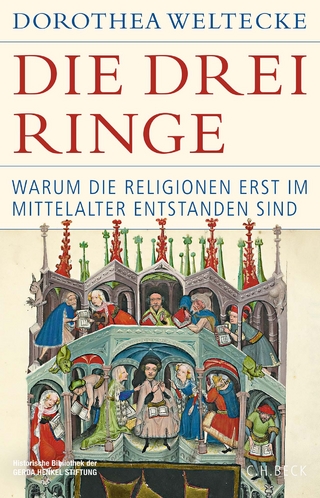
Pure Land, Real World
Modern Buddhism, Japanese Leftists, and the Utopian Imagination
Seiten
2022
University of Hawai'i Press (Verlag)
978-0-8248-9244-9 (ISBN)
University of Hawai'i Press (Verlag)
978-0-8248-9244-9 (ISBN)
Shows that the Pure Land tradition informed twentieth-century Japanese thought in profound and surprising ways and suggests that it might do the same for twenty-first-century thinkers. The critical power of Pure Land utopianism has yet to be exhausted.
For close to a thousand years Amida’s Pure Land, a paradise of perfect ease and equality, was the most powerful image of shared happiness circulating in the Japanese imagination. In the late nineteenth century, some Buddhist thinkers sought to reinterpret the Pure Land in ways that would allow it speak to modern Japan. Their efforts succeeded in ways they could not have predicted. During the war years, economist Kawakami Hajime, philosopher Miki Kiyoshi, and historian Ienaga Saburō—left-leaning thinkers with no special training in doctrinal studies and no strong connection to any Buddhist institution—seized upon modernized images of Shinran in exile and a transcendent Western Paradise to resist the demands of a state that was bearing down on its citizens with increasing force. Pure Land, Real World treats the religious thought of these three major figures in English for the first time.
Kawakami turned to religion after being imprisoned for his involvement with the Japanese Communist Party, borrowing the Shinshū image of the two truths to assert that Buddhist law and Marxist social science should reinforce each other, like the two wings of a bird. Miki, a member of the Kyoto School who went from prison to the crown prince’s think tank and back again, identified Shinran’s religion as belonging to the proletariat: For him, following Shinran and working toward building a buddha land on earth were akin to realizing social revolution. And Ienaga’s understanding of the Pure Land—as the crystallization of a logic of negation that undermined every real power structure—fueled his battle against the state censorship system, just as he believed it had enabled Shinran to confront the world’s suffering head on.
Such readings of the Pure Land tradition are idiosyncratic—perhaps even heretical—but they hum with the same vibrancy that characterized medieval Pure Land belief. Innovative and refreshingly accessible, Pure Land, Real World shows that the Pure Land tradition informed twentieth-century Japanese thought in profound and surprising ways and suggests that it might do the same for twenty-first-century thinkers. The critical power of Pure Land utopianism has yet to be exhausted.
For close to a thousand years Amida’s Pure Land, a paradise of perfect ease and equality, was the most powerful image of shared happiness circulating in the Japanese imagination. In the late nineteenth century, some Buddhist thinkers sought to reinterpret the Pure Land in ways that would allow it speak to modern Japan. Their efforts succeeded in ways they could not have predicted. During the war years, economist Kawakami Hajime, philosopher Miki Kiyoshi, and historian Ienaga Saburō—left-leaning thinkers with no special training in doctrinal studies and no strong connection to any Buddhist institution—seized upon modernized images of Shinran in exile and a transcendent Western Paradise to resist the demands of a state that was bearing down on its citizens with increasing force. Pure Land, Real World treats the religious thought of these three major figures in English for the first time.
Kawakami turned to religion after being imprisoned for his involvement with the Japanese Communist Party, borrowing the Shinshū image of the two truths to assert that Buddhist law and Marxist social science should reinforce each other, like the two wings of a bird. Miki, a member of the Kyoto School who went from prison to the crown prince’s think tank and back again, identified Shinran’s religion as belonging to the proletariat: For him, following Shinran and working toward building a buddha land on earth were akin to realizing social revolution. And Ienaga’s understanding of the Pure Land—as the crystallization of a logic of negation that undermined every real power structure—fueled his battle against the state censorship system, just as he believed it had enabled Shinran to confront the world’s suffering head on.
Such readings of the Pure Land tradition are idiosyncratic—perhaps even heretical—but they hum with the same vibrancy that characterized medieval Pure Land belief. Innovative and refreshingly accessible, Pure Land, Real World shows that the Pure Land tradition informed twentieth-century Japanese thought in profound and surprising ways and suggests that it might do the same for twenty-first-century thinkers. The critical power of Pure Land utopianism has yet to be exhausted.
Melissa Anne-Marie Curley is assistant professor in the Department of Comparative Studies at the Ohio State University. Richard K. Payne is Yehan Numata Professor of Japanese Buddhist Studies at the Institute of Buddhist Studies, Berkeley.
| Erscheinungsdatum | 31.05.2022 |
|---|---|
| Reihe/Serie | Pure Land Buddhist Studies |
| Verlagsort | Honolulu, HI |
| Sprache | englisch |
| Maße | 152 x 229 mm |
| Gewicht | 151 g |
| Themenwelt | Geschichte ► Teilgebiete der Geschichte ► Religionsgeschichte |
| Geisteswissenschaften ► Philosophie ► Östliche Philosophie | |
| Geisteswissenschaften ► Religion / Theologie ► Buddhismus | |
| ISBN-10 | 0-8248-9244-5 / 0824892445 |
| ISBN-13 | 978-0-8248-9244-9 / 9780824892449 |
| Zustand | Neuware |
| Haben Sie eine Frage zum Produkt? |
Mehr entdecken
aus dem Bereich
aus dem Bereich
Herkunft, Blüte, Weg nach Osten
Buch | Hardcover (2024)
C.H.Beck (Verlag)
CHF 55,90
Von den Anfängen bis zur Gegenwart
Buch | Hardcover (2022)
C.H.Beck (Verlag)
CHF 47,60
warum die Religionen erst im Mittelalter entstanden sind
Buch | Hardcover (2024)
C.H.Beck (Verlag)
CHF 53,20


